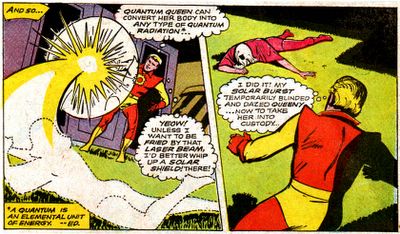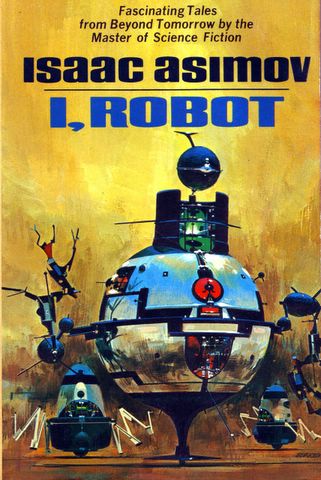Dec. 15, 1832 – Dec. 28, 1923
Eiffel was a French civil engineer who specialised in metal structures, known especially for the Eiffel Tower in Paris. His work includes designing the rotatable dome for Nice Observatory on the summit of Mont Gros (1886), and the framework for the Statue of Liberty now in New York Harbour.
After building the Eiffel Tower (1887-9), which he used for scientific research on meteorology, aerodynamics and radio telegraphy, he also built the first aerodynamic laboratory at Auteuil, outside Paris, where he pursued his research work without interruption during WW I.
An Ode To Eiffel:
Friday, December 15, 2006
This Day In History: The Origin of Nylon Stockings
On this day in 1939, nylon yarn was sold to hosiery mills to make women's stockings; marking the first use of commercial yarn for apparel. The product of DuPont enabled a record number of ladies' hose to go on sale for the first time in May, 1940. link
Thursday, December 14, 2006
On This Day: Quantum Physics Announced
In 1900, German physicist Max Planck made public his ideas on quantum physics at a meeting of the German Physics Society, revolutionizing scientists' understanding of physics.

Planck demonstrated that in certain situations energy exhibits characteristics of physical matter, something unthinkable at the time. He suggested the explanation energy exists in discrete packets, which he called "quanta." link

Sun Boy and Quantum Queen © DC Comics

Planck demonstrated that in certain situations energy exhibits characteristics of physical matter, something unthinkable at the time. He suggested the explanation energy exists in discrete packets, which he called "quanta." link

Sun Boy and Quantum Queen © DC Comics
Hell Is On Venus
Thanks to ESA’s Venus Express data, scientists obtained the first large-area temperature maps of the southern hemisphere of the inhospitable, lead-melting surface of Venus. The new data may help with searching and identifying ‘hot spots’ on the surface, considered to be possible signs of active volcanism on the planet.
To obtain this fundamental information about the surface temperature, VIRTIS made use of the so-called infrared spectral 'windows’ present in the Venusian atmosphere. Through these ‘windows’ thermal radiation at specific wavelengths can leak from the deepest atmospheric layers, pass through the dense cloud curtain situated at about 60 kilometres altitude, and then escape to space, where it can be detected by instruments like VIRTIS. In this way VIRTIS succeeded in looking through the thick carbon dioxide curtain surrounding Venus and detected the heat directly emitted by the hot rocks on the ground. On Venus there are no day and night variations of the surface temperature. The heat is globally 'trapped' under the carbon-dioxide atmosphere, with pressure 90 times higher than on Earth. Instead, the main temperature variation is due to topography. On Venus 'cold' means 447º C, while 'warm' means 477º C. Such high temperatures are caused by the strongest greenhouse effect found in the Solar System. link
Where is Robot Hell?
To obtain this fundamental information about the surface temperature, VIRTIS made use of the so-called infrared spectral 'windows’ present in the Venusian atmosphere. Through these ‘windows’ thermal radiation at specific wavelengths can leak from the deepest atmospheric layers, pass through the dense cloud curtain situated at about 60 kilometres altitude, and then escape to space, where it can be detected by instruments like VIRTIS. In this way VIRTIS succeeded in looking through the thick carbon dioxide curtain surrounding Venus and detected the heat directly emitted by the hot rocks on the ground. On Venus there are no day and night variations of the surface temperature. The heat is globally 'trapped' under the carbon-dioxide atmosphere, with pressure 90 times higher than on Earth. Instead, the main temperature variation is due to topography. On Venus 'cold' means 447º C, while 'warm' means 477º C. Such high temperatures are caused by the strongest greenhouse effect found in the Solar System. link
Where is Robot Hell?
Wednesday, December 13, 2006
Frank Cho's Monkey Man

Frank's old syndicate reran this old Liberty Meadows strip this weekend. It's always nice to see a drop of real art on the comic pages again, even if it is digital format.
Tuesday, December 12, 2006
New Carnivorous Sponges Discovered

Nine new species of carnivorous sponges (Cladorhiza segonzaci, Chondrocladia koltuni, C. lampadiglobus, Asbestopluma agglutinans, A. (Helophloeina) formosa, Abyssocladia huitzilopochtli, A. inflata, A. dominalba and A. naudur) are described.
Eight of the sponges were collected from the French IFREMER manned submersible Nautile near active hydrothermal sites of the East Pacific Rise and of the North Fiji and Lau Basins, one from the Russian submersible Mir 2 in the Northwest Pacific near Bering Island, and one from the US submersible Alvin south of Easter Island. Their life conditions are described from direct observations from the submersibles. Some remarks are presented on the taxonomy of Cladorhizidae and more generally of carnivorous Poecilosclerida. The study suggests a very high degree of diversity in the deep Pacific carnivorous sponges.
New carnivorous sponges (Porifera, Poecilosclerida) collected from manned submersibles in the deep Pacific. 2006. J. Vacelet. Zoological Journal of the Linnean Society 148: 553–584.
Sunday, December 10, 2006
DNA Nanobots Unleashed!
Scientists have developed a DNA cassette through which a nanomechanical device can be inserted and function within a DNA array, allowing for the motion of a nanorobotic arm. The results mark the first time scientists have been able to employ a functional nanotechnology device within a DNA array.
He added that the results pave the way for creating nanoscale “assembly lines” in which more complex maneuvers could be executed.

He added that the results pave the way for creating nanoscale “assembly lines” in which more complex maneuvers could be executed.

The results are based upon a previously developed device that eables the translation of DNA sequences, thereby potentially serving as a factory for assembling the building blocks of new materials. The invention has the potential to develop new synthetic fibers, advance the encryption of information, and improve DNA-based computation.
The new cassette-like device can control sequences or insertion sequences that would allow the researchers to manipulate the array or insert it at different locations. They visualized their results by atomic force microscopy (AFM), which permits features that are a few billionths of a meter to be visualized. Link
Warning! Robotic Bjork ahead…:
Subscribe to:
Posts (Atom)








